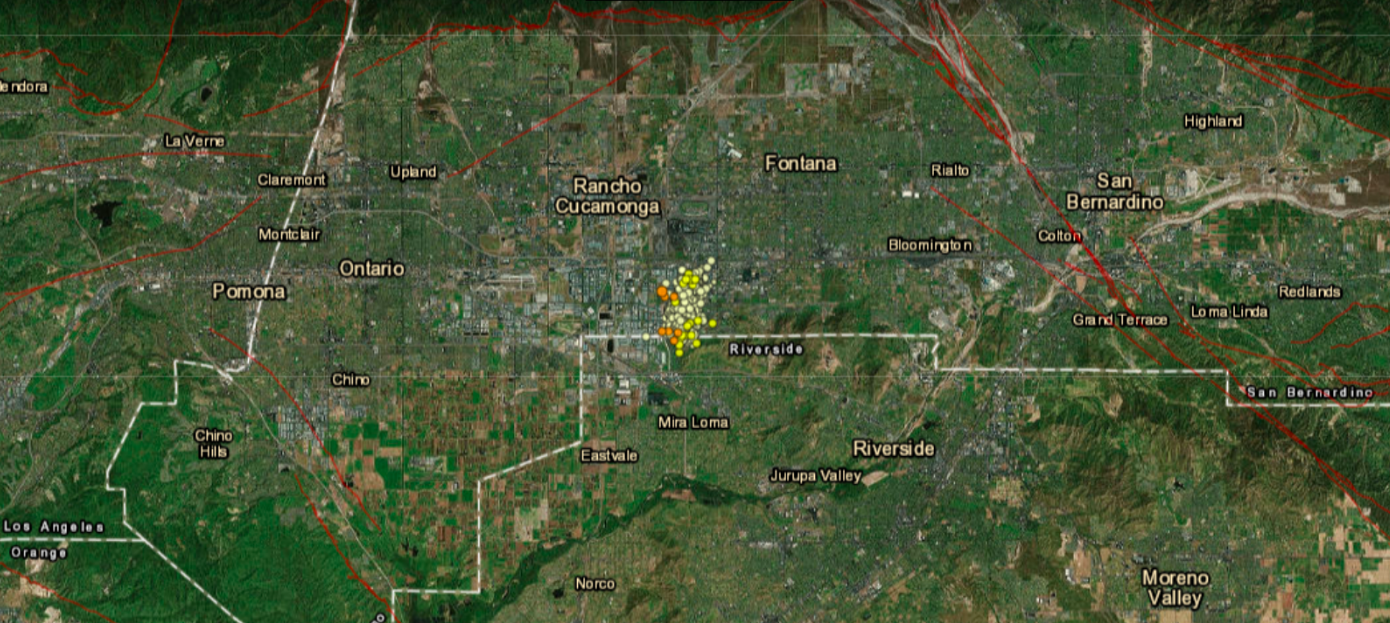
More than 1,000 tiny earthquakes have rumbled through an area of Southern California for nearly a month––but few people actually noticed.
“Swarmageddon,” as it’s been dubbed, started May 25 and lasted through at least June 19, according to the Southern California Seismic Network, a partnership between the U.S. Geological Survey and the California Institute of Technology. It affected an area of San Bernardino and Riverside counties 40 miles east of downtown Los Angeles.
At least 1,060 earthquakes were recorded, though none of them were stronger than magnitude 3.2, a blip in terms of Californian quakes. The vast majority were less than magnitude 2, meaning most people could not feel them.
Jennifer Andrews, a seismologist at the Caltech’s Seismological Laboratory, tells TIME that, while earthquake swarms are “fairly common” in Southern California, the most recent swarm is getting attention because it occurred in a densely populated area. “I would say they’re common everywhere you get earthquakes, and often in volcanic areas,” she added.
Andrews says that Californians should not consider the swarm as a warning sign of the so-called “big one” –– the next devastating earthquake that strikes fear into the hearts of many who live in the state. “There is no way to know if these swarms are predictors,” she says.
California last braced itself for the “big one” in September 2016, when a swarm of more than 100 earthquakes hit Bombay Beach in Southern California. The quakes occurred near a set of cross-faults that connect to the San Andreas fault, which raised alarms because activity along that fault is considered especially dangerous. “The reason we pay close attention to swarms closer to the San Andreas fault is that it’s overdue for an earthquake, so whenever there is activity nearby it’s possible whatever is causing the swarms could move to San Andreas and trigger the ‘big one,'” says Andrews.
California experiences an average of one magnitude 3 quake almost daily, with 26 in the last 30 days alone.
The last major earthquake in California was 1994’s Northridge earthquake, which affected Los Angeles and the surrounding areas. The 6.7 magnitude earthquake caused $25 billion in damage, killed 72 people and injured 9,000 more.
Of the state’s 300 fault lines, pressure around the San Andreas fault, which runs nearly 800 miles long and near the highly populated cities of San Francisco and Los Angeles, has built since the last catastrophic earthquake in 1906, which killed up to 3,000 people. According to the U.S. Geological Survey, the Great 1906 San Francisco earthquake, a 7.9-magnitude event, remains one of the deadliest natural disasters in U.S. history.
More Must-Reads From TIME
- Dua Lipa Manifested All of This
- Exclusive: Google Workers Revolt Over $1.2 Billion Contract With Israel
- Stop Looking for Your Forever Home
- The Sympathizer Counters 50 Years of Hollywood Vietnam War Narratives
- The Bliss of Seeing the Eclipse From Cleveland
- Hormonal Birth Control Doesn’t Deserve Its Bad Reputation
- The Best TV Shows to Watch on Peacock
- Want Weekly Recs on What to Watch, Read, and More? Sign Up for Worth Your Time
Write to Gina Martinez at gina.martinez@time.com